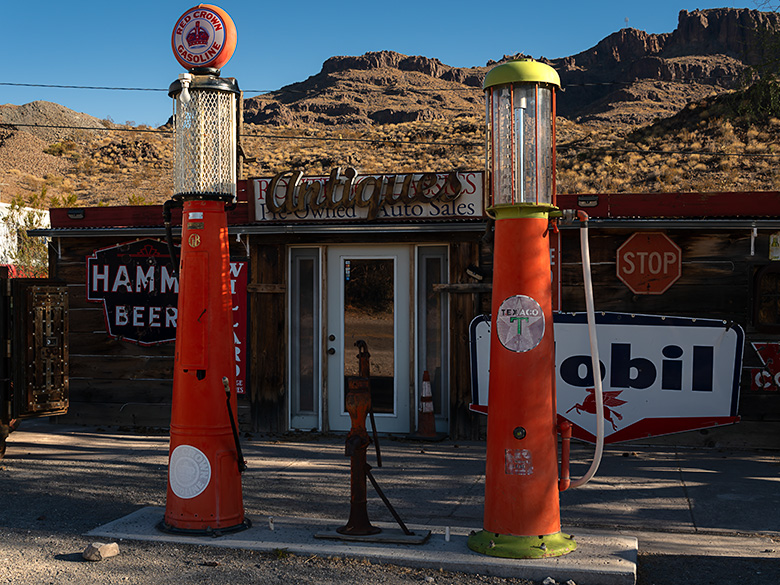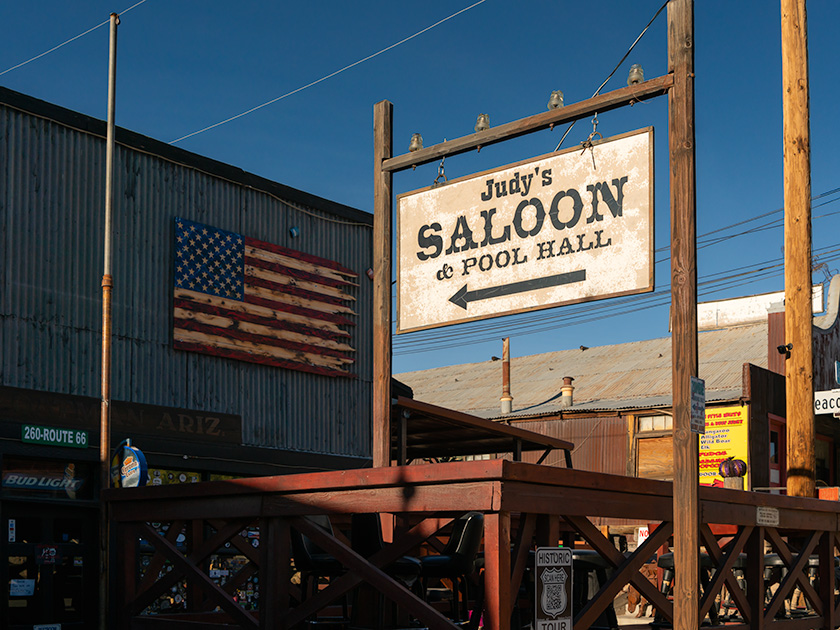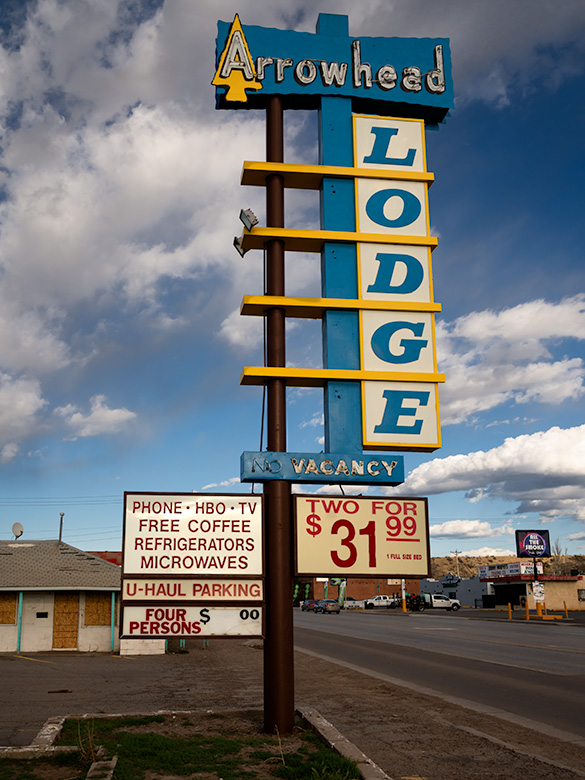
Queen Anne and I recently traveled to Gallup, New Mexico, to film some b-roll footage of Route 66 across Arizona. We wanted to traverse the Grand Canyon State in a single day, so we spent the night in neighboring New Mexico to get those video clips and finish our latest Route 66 video. I’m excited to announce that the video has just been released on YouTube—be sure to check it out here.
Although we’ve driven through Gallup before, we decided to stick around and see what all the fuss was about. Spoiler alert: it’s more than just a pit stop for refueling the car and our caffeine levels. We discovered it’s much more than just a stop along the Mother Road. Gallup is a vibrant hub of Native American culture and history, and I think it would make an excellent topic for one of my monthly projects. I look forward to returning.
Founding and Early Development
Gallup, New Mexico, was established in 1881 as a headquarters for the southern transcontinental rail route by the Atlantic and Pacific Railroad, which later became part of the Burlington Northern Santa Fe Railroad. The town was named after David L. Gallup, a paymaster for the railroad. When workers went to collect their pay, they would say they were “going to Gallup,” which led to the town’s name. Imagine that: a city named after a guy who handed out paychecks. If only my old boss had been so popular—’Jim’s Paycheck Town’ does have a certain ring, though.
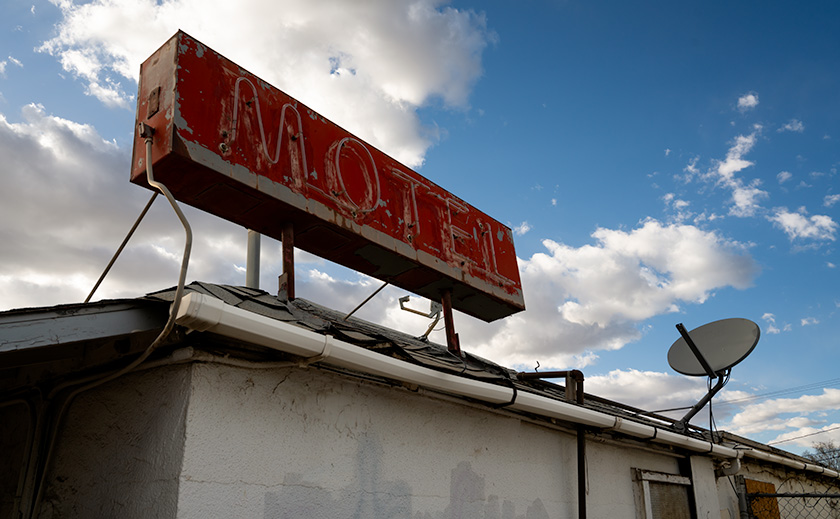
Strategic Location and Growth
Gallup’s strategic location at the crossroads of several major rail lines and highways contributed to its growth as a trade and transportation hub. It became an essential center for the coal, timber, and livestock industries, which fueled its economy in the early years. Rich mineral deposits in the region also attracted various settlers and businesses. Coal, timber, livestock—Gallup had it all! It was the Amazon Prime of the 19th century.
Gallup’s proximity to the Navajo, Zuni, and Hopi reservations made it a significant trading post for Native American crafts and goods. This connection to Native American culture has been a defining characteristic of Gallup, earning it the nickname “Indian Capital of the World.” This diverse cultural heritage is vital to the town’s identity and economy.
Historical Events
One of the most impactful events in Gallup’s history was its major stop on Route 66, the iconic highway connecting Chicago to Los Angeles. This brought a steady flow of travelers and tourists through the town, further boosting its economic and cultural significance. The El Rancho Hotel hosted so many Hollywood stars that I half expected to see John Wayne himself checking in at the front desk. I had my autograph book ready, just in case.
Today, Gallup is known for its vibrant downtown, cultural events such as the Gallup Inter-Tribal Indian Ceremonial, and its decadent array of murals and historical markers celebrating its diverse heritage. The town remains a vital link between various cultures and continues to honor its historical roots by preserving and celebrating its unique past.
Gallup’s Role in Preserving and Promoting Native American Culture:
Gallup, often called the “Indian Capital of the World,” is crucial in preserving and promoting Native American culture. The town’s proximity to Navajo, Zuni, and Hopi reservations makes it a central hub for Native American arts, crafts, and traditions. Gallup’s cultural landscape is rich with influences from these tribes, visible in the town’s art, architecture, and daily life.

The annual Gallup Inter-Tribal Indian Ceremonial is a significant event that showcases Native American traditions, including dances, parades, and crafts. This event attracts visitors from around the world and helps promote the cultural heritage of the local tribes. Additionally, Gallup is home to several museums and cultural centers celebrating Native American history and contributions, further solidifying its role as a cultural preservationist. The Gallup Inter-Tribal Indian Ceremonial is a bigger deal than Anne’s annual shoe sale pilgrimage—and trust me, that’s saying something.
I know that there are many more Gallup stories to be told, and since its elevation is higher than Phoenix’s, we may turn it into an escape in the following summer or two. If we pique your curiosity with this month’s Route 66 photos, I invite you to explore larger versions of this month’s images on my New Work portfolio and the detailed pieces I’ve posted on Fine Art America. These photos will be displayed there for three months before being rotated.
Good Eats
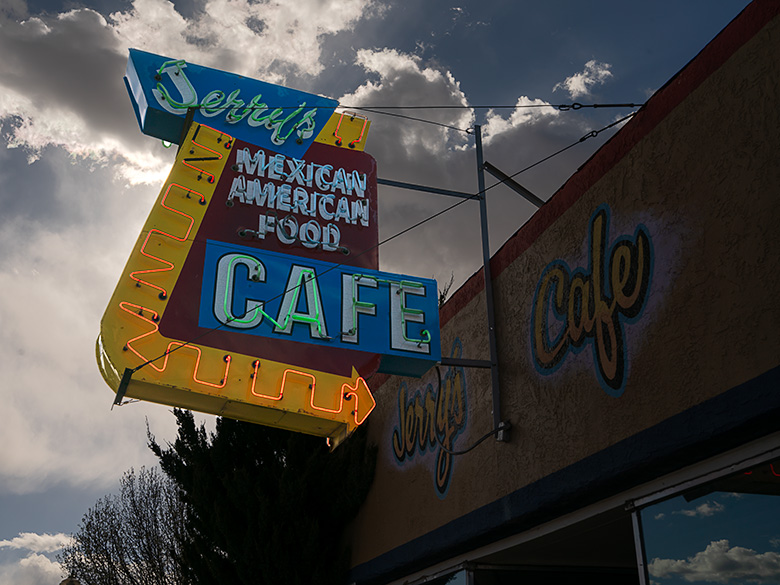
As is our custom, we checked Trip Advisor for a nice dinner place. As you’re all aware, that’s the only way I can get Her Majesty into the car—as a repayment for “Gallup! You want me to go to Gallup with you?” At the top of the list was Jerry’s Cafe. It’s located near the municipality buildings downtown, a few blocks south of the railroad tracks.
Jerry’s is a no-frills dive with linoleum floors, a small counter along the left wall, a half-dozen tables in the center, and as many booths lining the right wall. The fare is American and Mexican dishes, and don’t even think of wishing for a beer or Margarita because they don’t have a liquor license. Since the place is so tiny and located in the business district, there’s usually a long line of locals trying to get in.
When we drove into town, I immediately spotted several closed motels that I wanted to photograph in the evening light. I suggested to the Queen that we get an early dinner and shoot our way back to the motel afterward. “Whatever,” was her reply. “When we got to Jerry’s, I couldn’t believe our luck—no line at 4 PM! It was as if the stars had aligned, or more likely, everyone else was still at work.
So, the place is a dive; they don’t serve alcohol, and it’s crowded. I was in heaven. Anne, not so much. There must be a reason to eat here—the food. Mine was so good that I don’t even remember what Anne ordered. They offer specials that are variations of what we call in Arizona a Navajo Taco, but they called them Stuffed Sopaipillas. Mine was stuffed with guacamole, carnitas, and jalapenos—not those sissy jalapenos from Texas, Arizona, and California. This is New Mexico, and these were proper Hatch Jalapenos, which bite back. I knew I was in trouble when this came out of the kitchen. The Sopaipilla was bigger than my head, and its plate was barely big enough to contain it. It was a golden color with red and green chili smothering the top. Each bite contained a mouthful of cool guac, contrasting the zing of peppers and the crunchy bits of pork within the deep-fried tortilla. The other customers kept giggling and pointing at me because I kept making Homer Simpson noises, but I didn’t care. It was the best Chimichanga I’ve ever had, and I would happily embarrass myself again for another bite. This dish was good enough to change Gallup from a gas stop to a destination. I highly recommend it.

